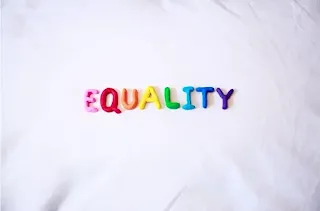The Difficult Road to Gender Equality
Even
while there has been considerable progress in the previous ten years in raising
awareness of gender equality, there is still a long way to go before a major
turning point is reached.
The
17 SDGs provide a constructive step toward gender parity and advancement.
People believe that oppression and constitutional rights are the causes of
gender inequality. It actually has to do with society's prevailing orthodox
ideas.
Socially,
it is expected of women to perform household duties. Women are responsible for
cooking. People make fun of males who want to help out around the house because
they don't realise that doing so simply serves to strengthen the bonds of love
and positivity within the family.
Men
are not permitted to show emotion. Boys are taught not to cry. Boys' mental
health is impacted by messages that tell them to be tough, stoic, and
emotionally repressed. In our culture, showing emotion is viewed as a feminine
quality. Both sexes are allowed to express their feelings any way they choose.
According to studies, 20% of the working-age population in 36 nations
affiliated with the Organization for Economic Co-operation and Development
suffers from mental health disorders, which costs those economies 3.5 per cent
of their GDP, or US$ 1.7 billion, in 2017.
Furthermore,
closing the gender employment gap might boost Australia's GDP by 11%. If girls
entered the workforce at the same rate as boys did after completing their
postsecondary education, the Australian economy could gain $8 billion.
The
way that various colours are connected to different genders is another factor
that encourages gender inequity. Pink is for females, and blue is for boys.
Gender has nothing to do with colour. The colour was chosen because of how well
it suited the colour of the hair and eyes. Pink was intended for brown eyes and
brown colour, while blue was meant for blonde hair and blue eyes. When a man
wears pink, he draws attention to himself and is teased. However, there has
been progress on this front, as prominent male figures have been photographed
in the media donning pink.
Additionally,
there is a gender divide in education. In Pakistan, there are more than 200
million uneducated women. The girls are denied an education since it is believed
that they won't assist society in any way. Boys are often given a decent
education since many families believe they will need to rely on them
financially in the future. Girls, on the other hand, are instructed in home
responsibilities.
Between
rural and urban areas, there is a gender gap. Around 58 per cent of girls in
urban regions and just 27 per cent of girls in rural areas are educated.
According to research, an uneducated mom is bad for her children's health and
wellbeing. According to a recent study, the rate of newborn mortality is
negatively associated with the mother's educational attainment. Just consider
the damage this would cause to Pakistan's future generations.
The
male who stays at home to care for a newborn child while his wife is at work
typically receives criticism from society. Women are also criticised for
working while neglecting their children because in our society, caring for
children is seen as a woman's highest responsibility. Less than one in five new
mothers and 29% of first-time mothers return to full-time employment in the
first three years following maternity leave. Compared to just 4% of males,
almost 17% of women quit their jobs in the first five years after giving birth.
Just imagine yourself in the position of the new mother who worked really hard
to land a career but now, as a result of gender stereotyping in society, is
forced to give up on her aspirations following the birth of her child.
We
must move quickly to take a few significant moves in the correct direction. The
world will flourish as a result of gender equality in both an economic and
moral sense. In order to transform culture, awareness campaigns can be
conducted in schools and universities, educating students about the fact that
men can accomplish tasks that are typically associated with women. Social media
platforms can be used to reach a wider audience by uploading content about
women's empowerment in order to raise awareness. Students can be urged to run
social media accounts where they can post research on this specific topic as
well as be encouraged to write on gender equality and have it published in
their school magazines.
Students
should cook and clean at home in order to genuinely make an impact. People
nearby will adopt a different mentality as a result of this.
A
gender-equal society, which is currently only a pipe dream in Pakistan, would
raise respect between the sexes, distribute work equally between the home and
the workplace, improve the economy, and provide equal justice.

